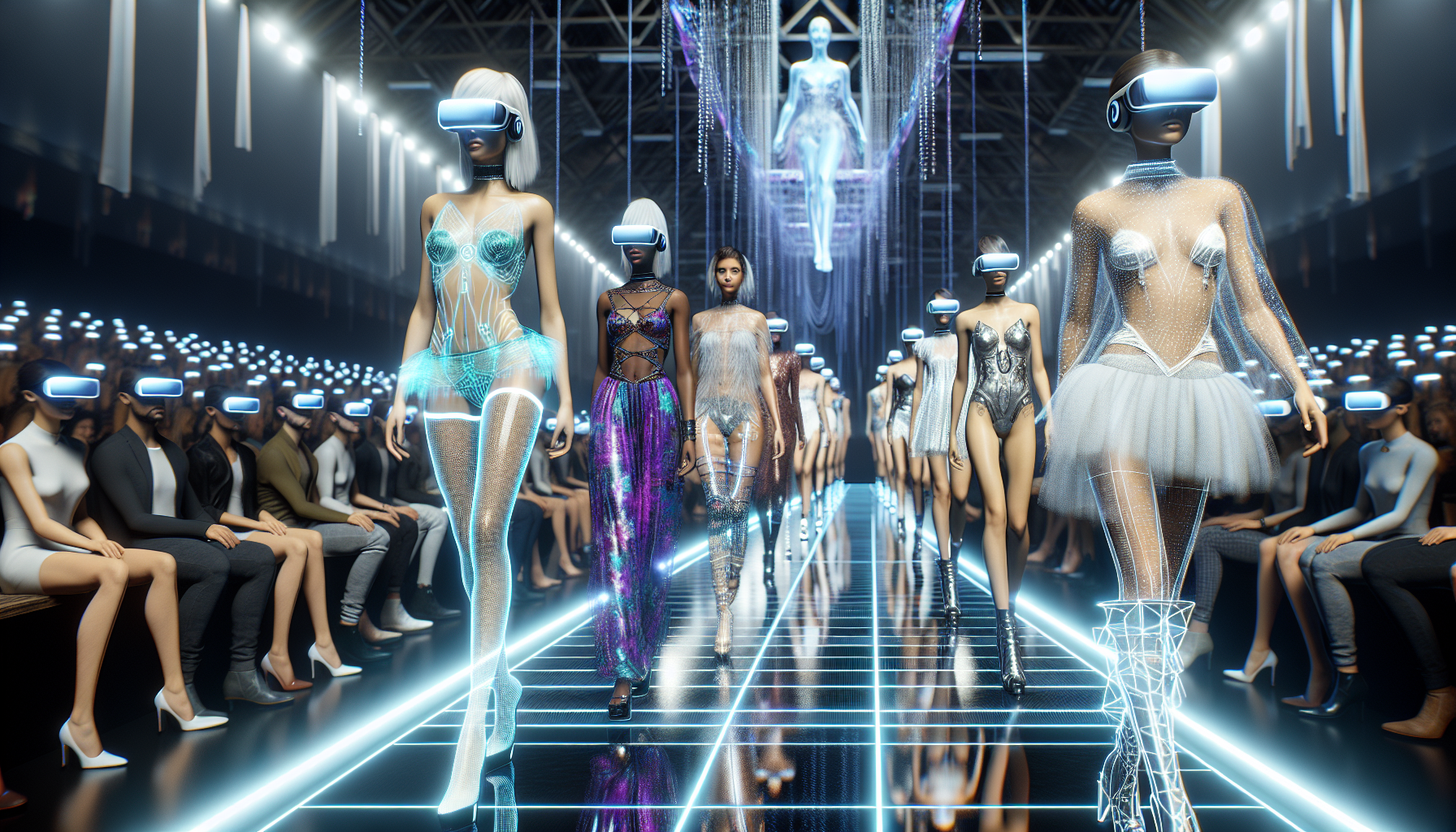Introduction to Pandemic Driven Innovation
The fashion industry, known for its glitz and glamour, faced unprecedented challenges during the COVID-19 pandemic. As social distancing and lockdowns became the new normal, the traditional model of fashion shows with large gatherings was no longer viable. This led to a revolutionary shift – the rise of virtual fashion shows. This article examines how the pandemic has accelerated digital innovation and transformed the runway into a virtual experience.
Adapting to New Realities
When the pandemic first struck, the fashion industry was hit hard. Major events were canceled or postponed indefinitely, leaving fashion houses in a quandary. The need to adjust to changing circumstances became a catalyst for change. Designers and fashion brands, who had long sought the admiring glances of audiences in packed venues, now had to rethink their strategy for launching new collections.
Recognizing the potential of technology, many embraced the virtual realm to showcase their work. Virtual fashion shows provided a safe alternative to the traditional runway while allowing designers to reach a potentially larger and more diverse audience. Brands like Balenciaga and Gucci set precedents with imaginative and avant-garde virtual presentations, signaling a new era in fashion displays.
The Digital Runway
The transformation to digital runways allowed designers to flex their creative muscles in ways that physical shows could not match. With no physical constraints, the possibilities became boundless. Virtual reality (VR), augmented reality (AR), and computer-generated imagery (CGI) opened new doors to create engaging and immersive experiences.
In these digital spaces, viewers could experience a three-dimensional fashion show from the comfort of their homes. This gave designers the opportunity to intertwine storytelling with their fashion statements, resulting in a more complex and interactive showcase of their pieces. Furthermore, digital runways offered a sustainable alternative by reducing the carbon footprint typically associated with fashion weeks around the world.
Engaging a Global Audience
Transitioning to digital platforms allowed brands to democratize fashion show attendance. Previously exclusive to buyers, celebrities, and the press, virtual fashion shows could now be accessed by anyone with an internet connection. Livestreams on platforms like YouTube, Instagram, and dedicated virtual showrooms became the norm, leading to increased engagement from a global audience.
For instance, the virtual Shanghai Fashion Week in March 2020 garnered an impressive viewership and was hailed as a triumph, signaling the viability of virtual events in the fashion calendar. Consumers enjoyed front-row access, and brands benefited from direct feedback and interaction with their audience, something that was limited in physical shows.
Challenges and Innovations
The shift to virtual fashion shows wasn’t without its challenges. The spontaneity and energy of a live audience were difficult to replicate online. Designers had to find ways to evoke emotions and connections without physical presence. They turned to technologically driven solutions like 360-degree camera angles, interactive interfaces, and even holographic models to captivate spectators.
Furthermore, brands explored innovative methods to keep viewers engaged. Virtual try-ons, interactive e-commerce links, and live chat functionalities provided a full-fledged, immersive shopping experience. By integrating these elements, designers not only showcased their creativity but also drove commercial success directly through their shows.
Sustainability and Inclusivity
An unexpected boon of virtual fashion shows has been their contribution to sustainability and inclusivity. By going digital, the industry reduced its environmental impact, aligning with the growing demand for eco-friendliness. Moreover, the inclusivity of virtual shows resonated with audiences who called for more diversity in fashion. Virtual presentations allowed for a range of body types, ethnicities, and gender representations that physical limitations might have hindered.
The Path Forward
As the world gradually emerges from the throes of the pandemic, the question remains – will virtual fashion shows continue to be a significant part of the industry? While in-person events slowly return, the advancements and investments made in digital fashion presentations suggest a hybrid future. The success of virtual shows has proven that they provide valuable alternatives that can coexist with the traditional formats.
Many industry insiders predict a blend of physical and digital, where the reach and innovation of virtual experiences complement the tangibility and intimacy of live shows. This hybrid model could very well be the next evolution in fashion presentation, combining the best of both worlds.
Conclusion
The COVID-19 pandemic forced the fashion industry to pivot in a way that few could have predicted. In doing so, it uncovered the immense potential of virtual fashion shows. Harnessing cutting-edge technology to produce captivating experiences not only ensured the industry’s survival during challenging times but also pointed towards a more progressive, inclusive, and sustainable path forward. As designers and brands continue to navigate the post-pandemic landscape, the influence of virtual fashion shows is likely to remain a significant and transformative force.

